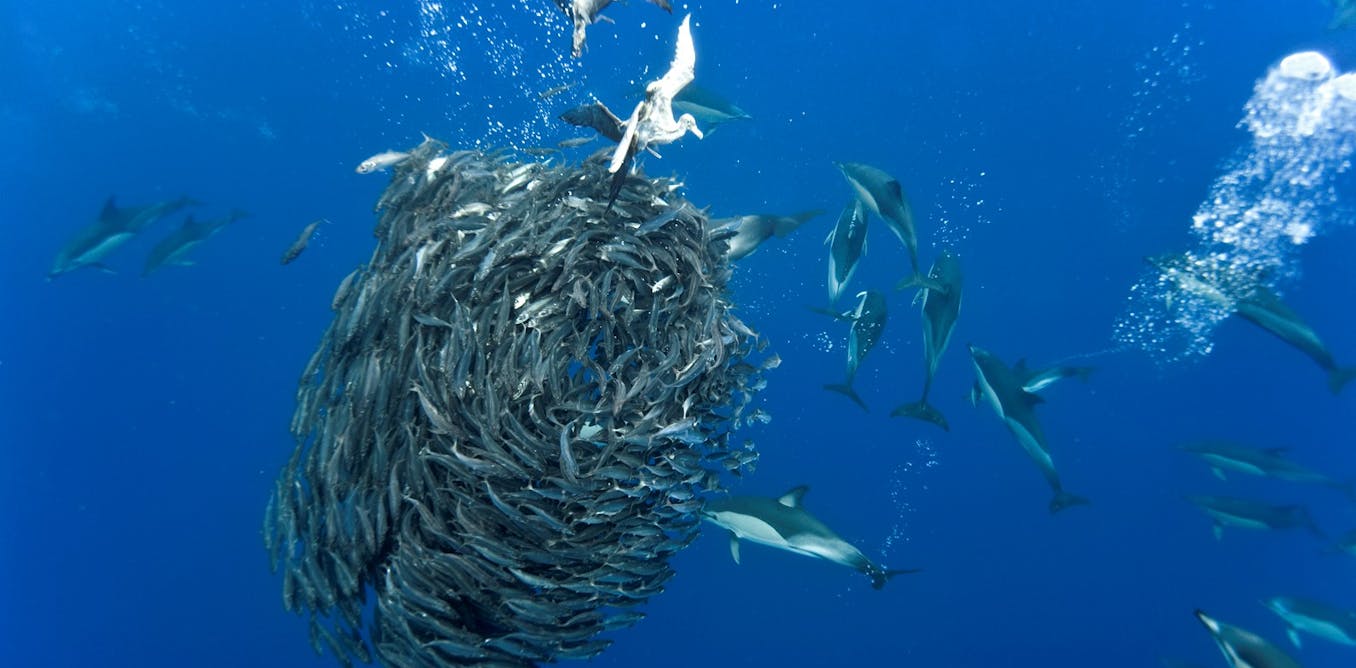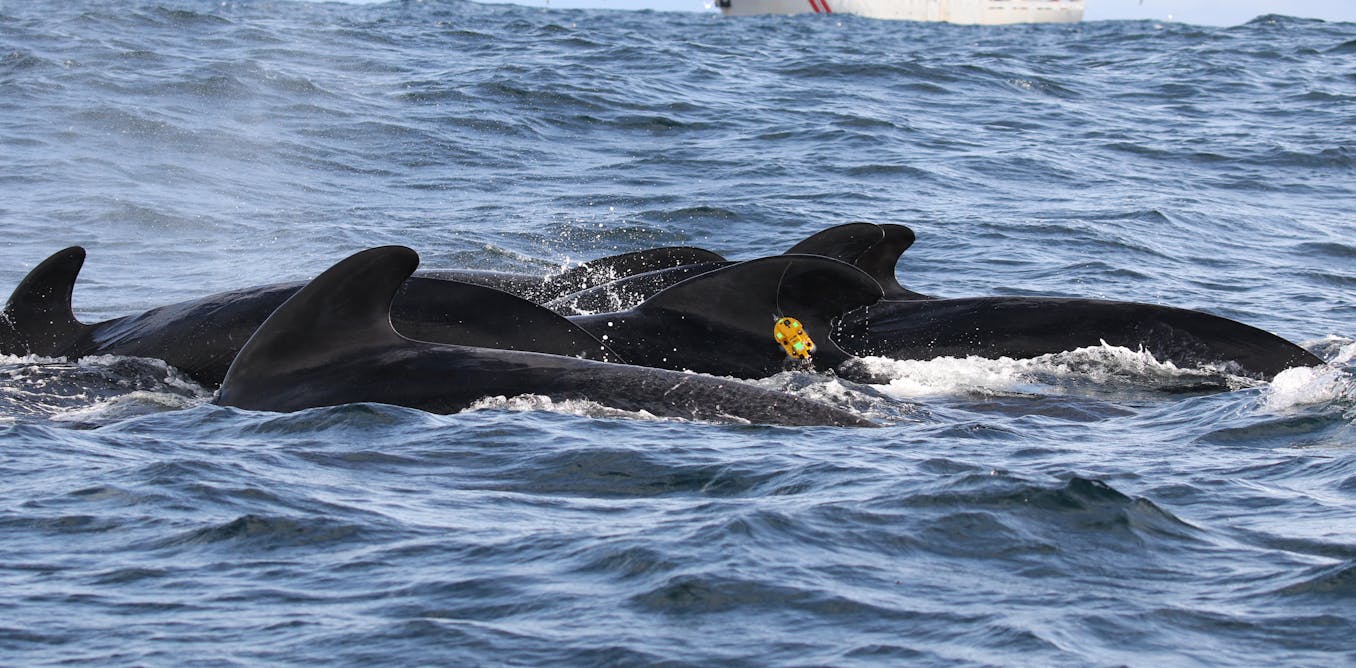
Are marine protected areas helping marine mammals and birds? Maybe, but more can be done
MPAs are a start - but more needs to be done to help protect much-loved species such as Atlantic puffins, bottlenose dolphins and orcas.
Dec. 16, 2021 • 7 min • Source
Our oceans are under pressure like never before, with over 60% struggling from the increasing impact of fishing, coastal activities and climate change. The harsh truth is that as we move towards 2022 only 3% of oceans are totally free from the pressure of human activity. The greatest impact appears to be on large-bodied animals such as marine mammals and birds, which cannot reproduce as quickly as smaller species.
Through my 40 years of extensive work on marine animals - and my current involvement in a European Commission project to help assess the effectiveness of marine protection areas (MPAs) - I have come to understand some of the issues which we need to consider to ensure that MPAs protect marine biodiversity.
Over one-third of marine mammals are threatened with extinction – and in Europe over 30% of marine birds are declining. Some species, including the Balearic shearwater and Atlantic puffin, are already endangered.
MPAs have been established to limit or exclude human activities that could potentially harm species and habitats. And, after a slow start, the last ten years have seen encouraging progress. MPAs now cover the 2020 global target of 10% of oceans, while some seas with high levels of human activity (the North Sea for example) have reached as much as 27% MPA coverage.
At a recent meeting, the international community agreed to protect 30% of oceans through MPAs and other conservation measures by 2030.
So, can we be optimistic that MPAs can turn the tide of declining marine biodiversity? Well, maybe, but in those ten years between 2010 and 2020 many species have continued to struggle despite the marked increase in MPAs. I would argue that more can be done to help marine mammals and birds specifically. Here’s some of my reasoning.
Size could be an issue
For one thing, I consider that the protected areas are probably too small to be fully effective – 50% of MPAs in EU waters measure less than 30km² and most are below 5km². This is a particular problem for marine mammals and birds, which are among the most mobile of all animals. I am not just talking about the annual 80,000km global migration of the Arctic tern between the Arctic and Southern Ocean, or the 22,000km migratory movements of the gray whale in the Pacific – many other marine species are extremely mobile too.
Read more: Expanding marine protected areas by 5% could boost fish yields by 20% – but there's a catch
Even diminutive harbour porpoises can move great distances, and have been tracked by satellite travelling more than 2,000km from Greenland’s west coast out into the North Atlantic west of Ireland.
Some seabirds, such as gannets, can often show a strong preference for particular locations and return to these year after year. There are also populations within a species, coastal bottlenose dolphins for example, which are much more sedentary and tied to a particular location. So, MPAs can be helpful in those cases. But the long distance migratory habits of many marine species shows the importance of providing protections throughout their life cycle and not only when they are in an MPA.
Within the European Union (EU) special protection areas for seabirds tend to be concentrated around the breeding colony, with little of the rest of the marine area protected. Yet, seabird species may regularly forage tens, sometimes hundreds, of kilometres away to find food for their young. I feel that the pressure of commercial fishing activity – due to depletion of fish stocks offshore - is rarely incorporated adequately in management plans.
Currently, marine mammal biodiversity does not seem to be well addressed by the EU habitats directive, because only six of the 30 species which regularly inhabit or pass through its waters are placed in a special annex requiring protected sites. Many more need area-based protection, including minke whale, killer whale and several dolphin species.
What next?
The creation of an MPA, particularly a coastal one, can bring its own challenges. Marine mammals and birds are iconic, and attract a lot of public interest.
The pressure of human disturbance may actually increase once the site has become designated and publicised. It flags that there are interesting species to be found, and suddenly the animals become the focus of attention. This is an increasing problem in the UK, fuelled by the rise in tourist trips to view the resident mammals and birds.
Read more: The hopeful return of polar whales
Many marine protected areas lack management plans, but in my opinion even those that have them rarely implement management in a fully effective way. Regulations may curtail human activities within the MPA but they rarely stop them entirely. And in many cases the activity, be it a wind farm construction or disturbance to the seabed from fishing, can often take precedence for socio-economic reasons.
Management plans, where they exist, often simply describe the problematic human activities. I think that there is limited consideration given to the impact of those pressures on different species, and robust monitoring of their populations is mostly inadequate.
How can anyone tell whether management measures are effective if neither the species nor the human activity is fully monitored, and the links between activity and its impact on each species has not been established? It seems to me that the bar for effective management of MPAs needs to be raised substantially from where it is at present.
European or other regional conservation agreements to help highly mobile cetaceans can help to improve the situation. That’s not to say that joining them automatically protects marine mammals – it does not. But it is a move in the right direction, and focuses governments to work together to protect these much-cherished species by better understanding and addressing specific threats.
So, spare a thought for the Atlantic puffin in its nesting burrow and the bottlenose dolphin mother and calf in their shallow bay. Would they recognise in a positive way that they are living and breeding in a marine protected area?
Peter Evans receives funding from UNEP/ASCOBANS to coordinate a conservation action plan for the harbour porpoise; he is currently part of a project funded by the European Commission to develop a questionnaire for member states to assess the management effectiveness of MPAs; and on occasions has had funding from Natural Resources Wales to monitor bottlenose dolphin and harbour porpoise populations within Special Areas of Conservation in West Wales.


